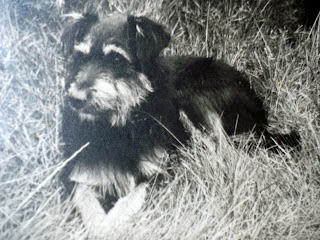
Photos of Dora Carrington are rare, but here she is holding a cat that looks remarkably like our Freddie.

Dora Carrington (known simply as 'Carrington') was, with Vanessa Bell, one of the better female painters of England's early 20th Century. Although not an actual member of London's Bloomsbury Group she will always be associated with them; and especially with Lytton Strachey.
Her 1916 portrait of writer Lytton Strachey (above) along with that by Henry Lamb of 1914, are perhaps the two most iconic portraits of that early Bloomsbury era.
Carrington was an ex-Slade girl, and became an essential member of London's fashionable bed-hopping bi-sexual intelligencia of the 1920's. She had affairs with members of both sexes, but her real love in life was the homosexual writer, and intellectual, Lytton Strachey. When Strachey died in 1932, she felt betrayed and rejected, and could no longer face life without him. It was claimed at the time that as he lay dying, his final words had been that he'd always wanted to marry her (this is probably false). He left her a large sum on money in his will, but this did nothing to console her grief, and she committed suicide a couple of months later.
Carrington never really bothered to sell her work, and hardly ever bothered to sign it either. She ended her life as one of England's most neglected top-rank female painters; and even today, with a popular film having been made about her life (Emma Thompson played Carrington in the 1995 film), she is still generally ignored.
If there is a period in English Art where 'Englishness' is personified, it is within the period of Bloomsbury's influence, where intellectualizing was far more important than commercializing. Roger Fry, Duncan Grant, Vanessa Bell, and Carrington were all responsible for this attitude, and much of that influence still lingers on today, especially within the extensive English Art College world.












































